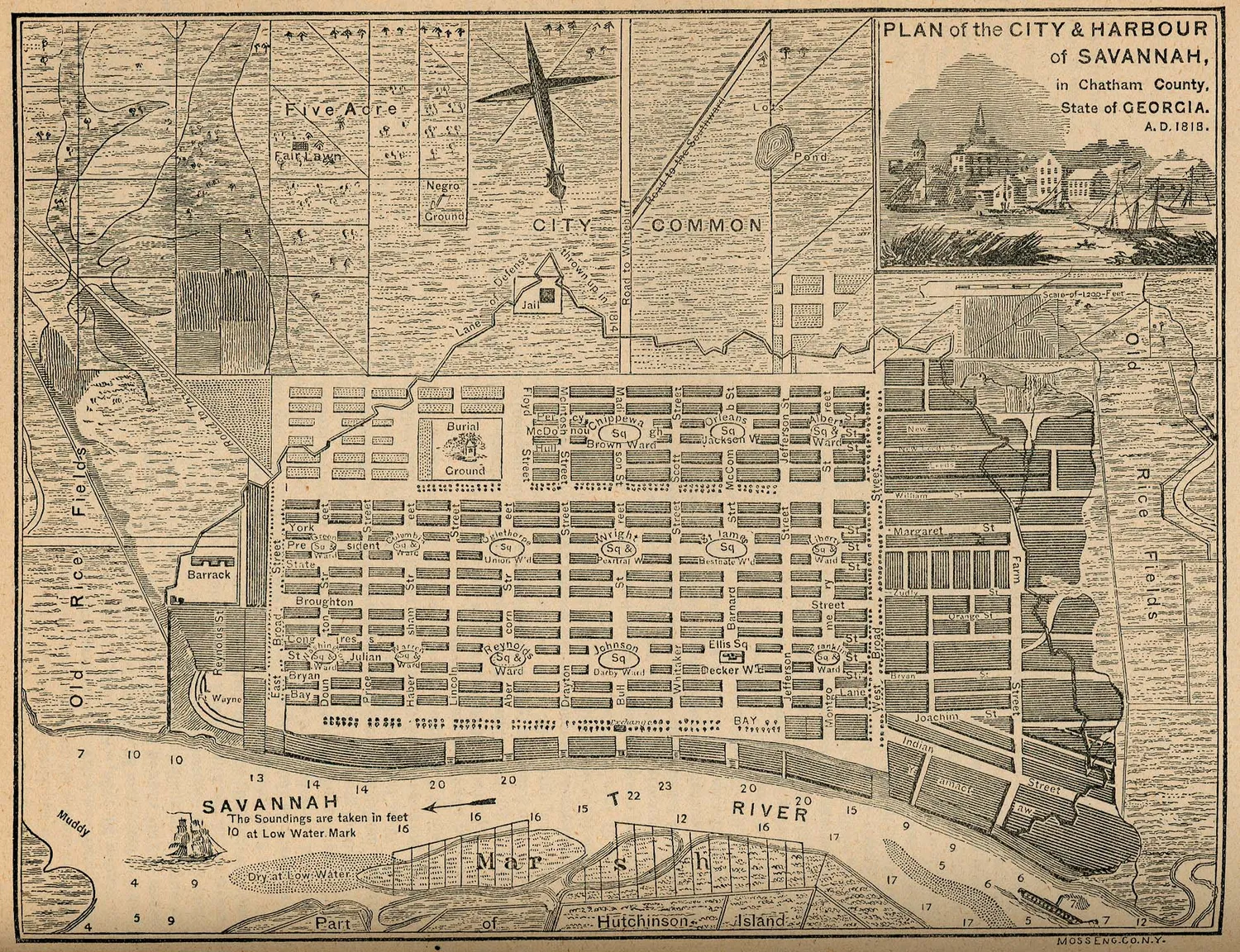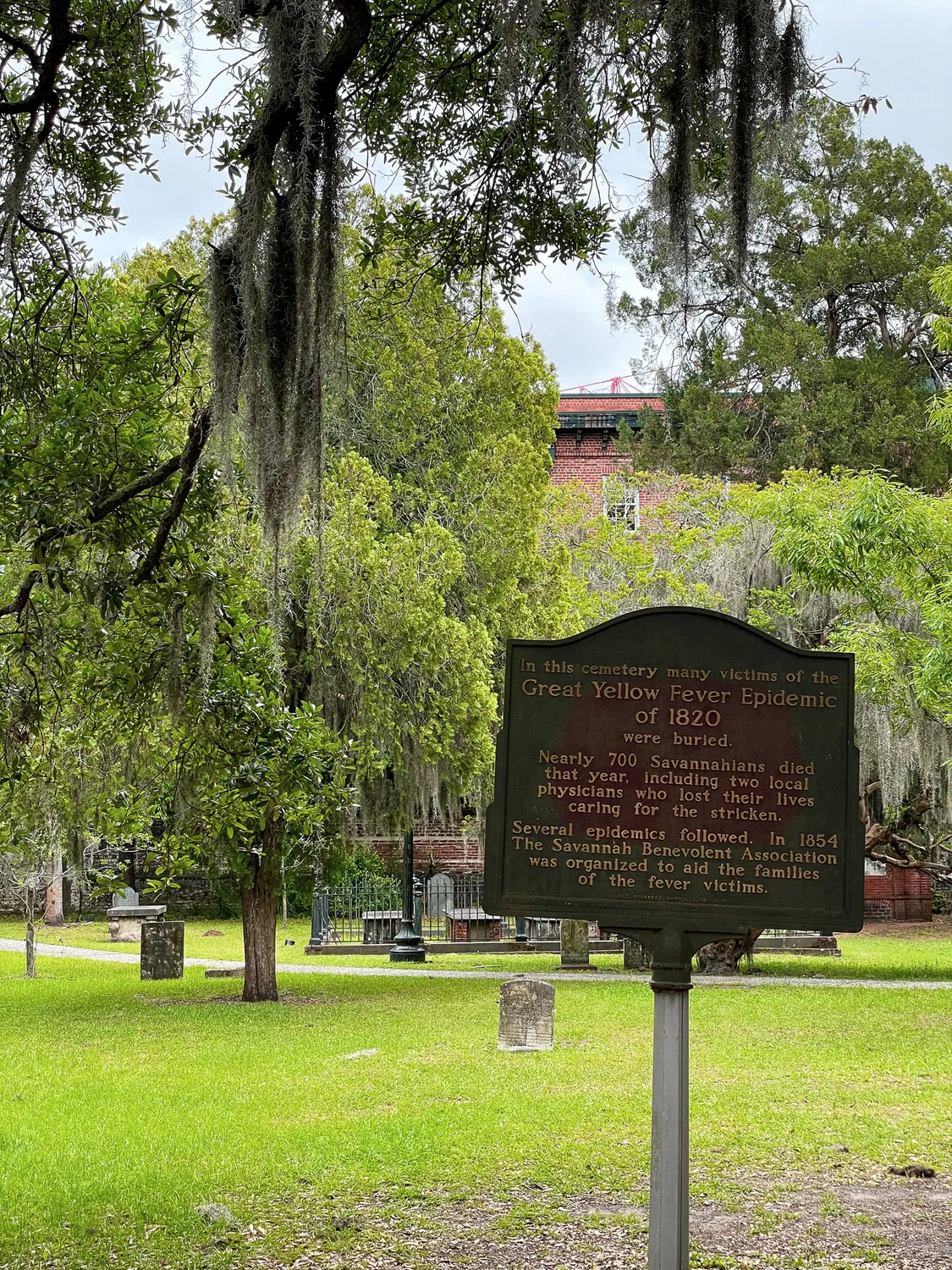Spookt's Guide toHaunted Savannah
A southern fairytale where history and mystery linger at every corner.









Some basic facts
Savannah's history began in 1733, the year General James Oglethorpe and 120 passengers aboard the ship Anne landed at a bluff along the Savannah River. Oglethorpe decided to name the 13th (and final American colony) "Georgia" after England's King George II. And Savannah became its first city.
Savannah is known as America's first planned city. Oglethorpe laid the city out in a series of grids that allowed for wide open streets intertwined with public squares and parks that served as town meeting places and business centers. Savannah had 24 original squares, 22 of which are still in existence today. (Source)
In December 1864, the city of Savannah was given as a Christmas gift to Abraham Lincoln from Civil War Union General William T. Sherman. He was inspired by the beauty of the city and spared it during his "March to the Sea" campaign.

Its strategic port location made it a significant center for trade, which included the sorrowful reality of enslaved labor. The city’s meticulously planned layout, with public squares and cobblestone streets, showcases historic architecture influenced by Colonial, Victorian, and Gothic styles. Much of this history has been preserved, giving the city its distinct charm. Savannah’s beauty and history seem to hold onto the past in ways that fuel the imagination, blending Southern charm with a lingering sense of mystery and, for many, evidence of the paranormal.
Why is Savannah haunted?
Along with cities like New Orleans and Salem, Savannah is considered to be one of America's most haunted cities. It has a long and turbulent history, filled with war, disease, tragedy, and slavery—all factors that contribute to a city’s ghostly lore.
War and Conflict
The Siege of Savannah in 1779 was one of the bloodiest battles of the Revolutionalry War. Over 800 soldiers were killed or wounded in the brutal fighting as American and French forces tried, albeit unsuccessfully, to recapture the city from the British. Many believe the spirits of these fallen soldiers linger in the areas where they died, as sightings of ghostly figures in colonial uniforms and strange sounds have been reported around the battle sites.
The Civil War saw Savannah become a strategic Confederate city and later a target of Union forces under General Sherman’s "March to the Sea." Although the city was spared destruction, Union forces occupied Savannah, making some buildings ike the Marshall House, into makeshift hospitals. Hundreds of wounded and dying soldiers filled the rooms, leading to deaths marked by intense suffering and pain. People today report ghostly apparitions, sounds of soldiers, and strange phenomena in such locations, with some claiming the spirits of those who died there have never left.
Slavery
Much like New Orleans, Savannah's proximity to the Atlantic Ocean and navigable rivers made it a major port city in the Transatlantic Slave Trade where thousands of enslaved Africans arrived and were sold. River Street and the nearby Factors Walk were central to this trade, with auction houses and warehouses where enslaved individuals were held in brutal conditions before being sold.
Many of Savannah’s iconic public squares hold ties to slavery, with stories that add a haunting layer to these beautiful sites. Wright Square, for example, was once the site of public executions, including that of Alice Riley, an indentured servant who, along with her partner, was executed in 1735. Riley’s ghost is believed to haunt the square, with sightings of a sorrowful woman thought to be searching for her lost child.
Yellow Fever Epidemics
The yellow fever epidemics that struck Savannah in the 19th century are another key reason for the city’s haunted reputation. Multiple outbreaks devastated the population, leading to rapid, tragic deaths and mass graves. The chaos, fear, and overwhelming loss caused by these epidemics left a lasting impact on the city’s ghostly lore.
During major outbreaks, particularly the epidemic of 1820 and others that followed, yellow fever claimed thousands of lives. In a time before effective treatments or understanding of the disease, families often lost multiple members within days. The rapid spread forced authorities to dig mass graves, often with minimal ceremony, and many victims were buried in unmarked or shallow graves. This hurried burial process is believed to have caused a restlessness of spirits, with ghost sightings and strange phenomena reported around areas that were once used for emergency burials.
Cemeteries and Unmarked Graves
Many buildings and streets in Savannah are constructed over what used to be burial grounds. Colonial Park Cemetery, one of the city's oldest cemeteries, is the resting place of thousands of residents who died from disease, duels, and tragic circumstances. Construction work in the city has also uncovered unmarked graves, which some believe has caused spirits to become restless.
Atmosphere
The city’s historic architecture, moss-draped trees, and cobblestone streets create a hauntingly beautiful backdrop that seems to invite ghostly stories. Savannah’s culture of storytelling adds to the city’s reputation, with ghost tours and local legends fueling the mystery.

Whether one believes in ghosts or not, Savannah’s haunted status adds a rich layer to its character, and the city embraces this supernatural allure, drawing countless visitors eager to explore its mysterious side.

